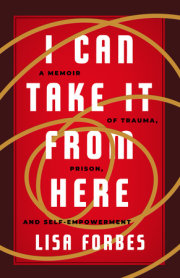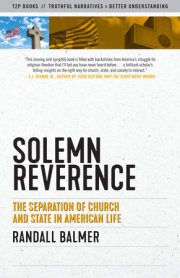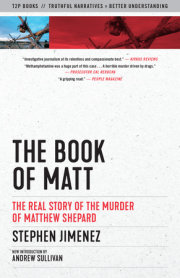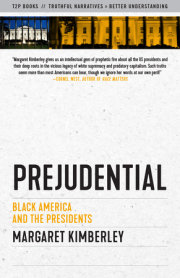New Introduction by John PradosSomebody asked me why an intelligence story from the Vietnam War is of any interest today, in the time of Donald Trump. Apart from the fact that this is a classic spy story, there are very direct reasons why it remains relevant, and will continue to be so under future presidents. At this writing, 2019, the most important national security issues on America’s table include North Korea’s nuclear capability, Russia’s intentions and its claims to a new generation of weapons, the realities of Saudi Arabia’s push for power and its relation to American policy, and the status of Iran’s militancy and military programs. On every one of these issues it is the job of the Central Intelligence Agency to gather and analyze information and, with respect to its findings and conclusions, to speak truth to power. On each of them, President Trump has already staked out a position.
Flash back to Vietnam. The size of the adversary’s forces, formally known as the order of battle, was clearly among vital issues for prosecuting the war. Then, as now, the White House had its own point of view. The national security adviser even had a political program that hinged on, among other things, enforcing a certain interpretation of the order of battle figures. The issues with which intelligence professionals concern themselves change, but there are real obstacles in speaking truth to power, and that essential problem is always the same. The Vietnam order of battle dispute speaks directly to today’s intelligence dilemmas, and to any situation in which the conclusions of intelligence analysts clash with the political or personal priorities of the president and his or her advisers.
Enter Sam Adams. Details of the fight he spearheaded over the enemy order of battle in Vietnam demonstrate in explicit detail the kinds of maneuvers to affect information that stand behind the authoritative-sounding term
intelligence report. Sam joined the CIA in 1963, after a couple of years in banking and four in the navy. He had a degree in European history from Harvard and had graduated from prep school, son of a father who’d held a seat on the New York Stock Exchange. He was also fourth cousin, seven times removed, of President John Quincy Adams. The CIA put Adams in its training program for espionage but then assigned him as an analyst in the Southern Africa Branch of its Office of Current Intelligence (OCI), working on the Congo, then a major hot spot for the United States in Africa. A few days after he went on duty a fresh rebellion broke out in the Congo. Sam made himself a go-to analyst on the Congo with predictions that U.S. diplomats rejected but then took place as he’d expected.
The Africa beat quieted in time, and Sam moved to the Southeast Asia Branch of OCI to report on the Vietnam War. In search of evidence he soon zeroed in on captured documents. In search of interpretation he looked at official statistics on the number of enemy guerrillas listed as defecting in given months. Sam discovered that defector numbers were much higher than estimates of enemy killed, and when looking at intelligence estimates for South Vietnamese provinces, he found that those rates of defection would have emptied the insurgent forces. This marked the beginning of what became a crusade to improve the accuracy of the intelligence.
Others at the CIA also believed that the military’s estimates of the adversary — the order of battle, or OB — were on the low side, but Sam led the way, systematically studying captured documents in which National Liberation Front cadres reported their own statistics. By 1967, Sam and cohorts believed that the enemy’s numbers could range higher than half a million — double what the military carried on its OB. This dispute would be fought out among U.S. intelligence agencies that year, and ultimately CIA higher-ups caved in to military intransigence. The enemy’s early 1968 Tet Offensive revealed the low OB numbers as bogus. In fact, Sam and others identified guerrilla units from which fighters had been killed or captured that were not even listed in the order of battle. After Tet, however, U.S. military intelligence
continued to resist revisions to its OB that increased enemy numbers.
This was more than a bureaucratic battle over reports. Soldiers and civilians died at the hands of an adversary more capable than intelligence assessed. Claims that enemy losses at Tet crippled the Liberation Front were critically dependent on what the OB numbers were. Sam decided that the CIA had failed to face its own responsibilities in the order of battle dispute. He filed a complaint with the agency’s inspector general, whose office conducted an investigation. Sam dissented from the report, writing that “the CIA is incapable of discussing intelligently several topics of current importance.” Director Richard Helms, the agency’s chief, took the unusual step of forming a panel to review the report and dissent, again rejecting Sam’s arguments. One after another Sam’s colleagues and superiors turned against him.
Sam stuck to his guns, never backing down. Over the last years of the Vietnam War he repeatedly criticized U.S. intelligence positions regarding the conflict. In 1969–1970, Sam dared to postulate a number for the spies the Liberation Front had undercover in the Saigon government and armed forces. In 1971 he showed that U.S. intelligence had underestimated the Khmer Rouge — Cambodian communists — in the same way it had failed on the Vietnamese enemy. In 1973, shortly after resigning from the agency, Sam lambasted the notorious Phoenix Program before the Senate Armed Services Committee, arguing that Phoenix had plunged the United States into a statistical game designed to conjure a picture of progress in the war. In 1975 he revealed the order of battle dispute, first in an article in
Atlantic magazine, then in testimony before the House of Representatives.
Fast-forward to the early 1980s, when Sam served as a key consultant for CBS television in preparing
The Uncounted Enemy, a documentary that exposed the military’s machinations in the order of battle dispute. The program so outraged General William C. Westmoreland, former U.S. troop commander in South Vietnam, that he sued CBS for defamation, leading to a highly controversial trial in which military figures, along with some of Sam’s former CIA colleagues, denounced him and his criticisms. Westmoreland’s case fell apart when military figures broke ranks with him and confirmed Sam’s position.
War of Numbers is Sam’s rejoinder. We are told that he started this book around the early 1980s, the time of
The Uncounted Enemy and the
Westmoreland v. CBS trial, both of which distracted him mightily. He did not finish in his lifetime, dying of a heart attack in 1988. His wife, Anne Adams, saw to it that Sam’s manuscript got published. The book provoked ire as had the man. Well received by the public, Adams’s work would be panned by a number of his own comrades. George Allen, a close collaborator at the CIA, found that Adams took a rather narrow perspective. Conventionally minded analysts like Thomas Cubbage had little use for
War of Numbers. Edwin Moise, a well-known historian of the Vietnam War, found the book falling short, though still very good. In his memoir Dick Helms wrote that Adams pursued his crusade until it became more of an ego trip and obsession than a reasoned opinion. George Allen softened a bit in his own memoir, speculating that after all his Vietnam angst, Sam died of a broken heart.
Twenty-five years after
War of Numbers’ first publication, it is Sam Adams who prevails. Historian Moise, for example, recently published an extensive recitation of the myths of Tet that completely accepts the Adams thesis.
War of Numbers presents facts of the order of battle dispute along with an unparalleled inside picture of an intelligence agency struggling with a key issue of the time. This cautionary tale details in page-turning prose how political resistance to inconvenient intelligence data can have tragic consequences. It can hamper diplomatic efforts, undermine military missions, and warp and corrode the workings of democracy itself, keeping from voters information they should have in assessing and choosing their leaders. This is why Sam Adams’s story is relevant today, and why it will remain relevant for as long as America continues to be a republic whose government funds and operates intelligence organizations.
John Prados
Washington, D.C.
May 2019
Copyright © 2020 by Steerforth Press. All rights reserved. No part of this excerpt may be reproduced or reprinted without permission in writing from the publisher.


















